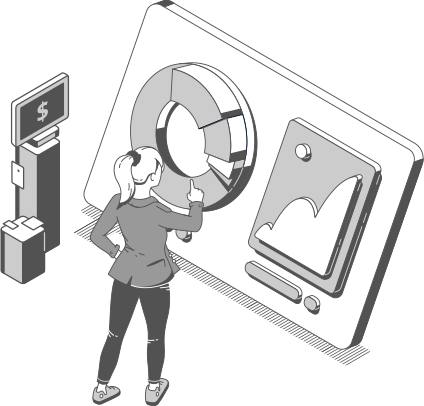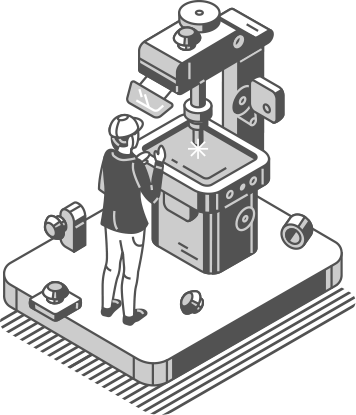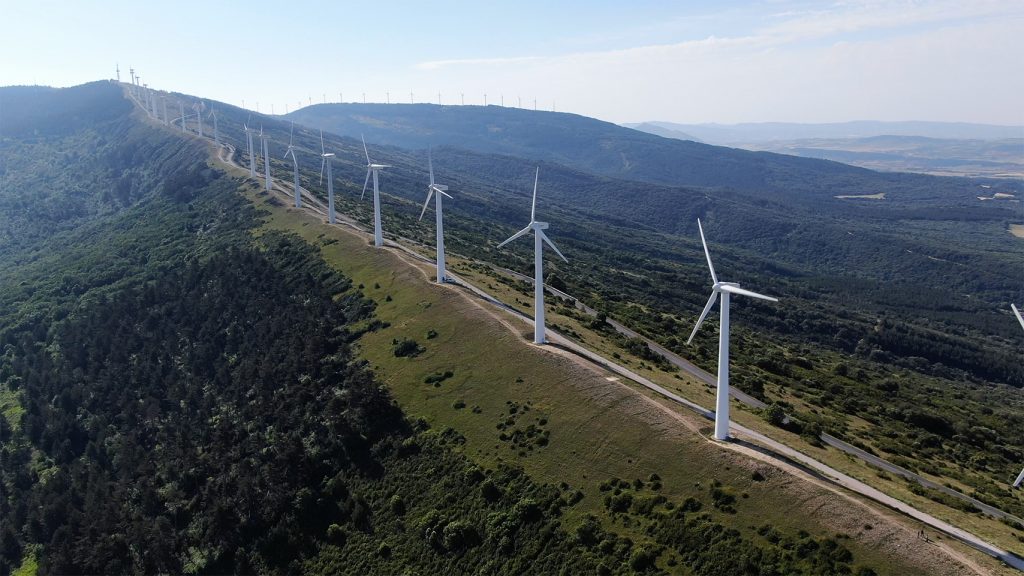The renewable energy sector has been a great ambassador for Navarra around the world since its implosion in the 1990s. The region played a leading role in the popularization of wind energy with pioneering wind farms and manufacturing companies that soon became among the most important in the world.
Three decades later, numerous companies are following in the wake of that first impulse by promoting disruptive projects aimed at reinventing and revitalizing the regional industry.
The commitment to green hydrogen, repowering, or benchmark projects such as the world’s largest photovoltaic park, designed by the Autonomous Community of Navarre, are some examples of this..
When the first six wind turbines installed in Navarra started spinning in 1994, no one would have anticipated that in less than a decade the region would be a world leader in the wind industry. What began almost by chance with the discovery of a wind canyon conducive to the industry – at a time when wind farms were usually installed in coastal areas – soon became the lever that shaped a flourishing industry in record time.
In less than a decade, Navarre went from being a net importer of energy to having numerous wind farms and world-class companies working within the industry. Regional firms played a leading role in this process. To name just a few settled in Navarre, the Basque company Gamesa (today Siemens Gamesa after the merger with the German multinational’s renewables business) was responsible for the manufacture of numerous turbines and Energía Hidráulica de Navarra (EHN) became the main operator of wind farms in the region, with nine farms in 1998, including the largest wind farm in Europe at the time of its inauguration.
Milestones such as these earned the firm an award from the Financial Times as the world’s best renewable energy company in 2000.
Today, both companies have headquarters in the City of Innovation in Sarriguren, on the outskirts of Pamplona. Few other relevant entities for the sector are located next to them, such as Ingeteam Power Technology or the Spanish Renewable Energy Center (CENER). They are some of the main protagonists of an industry that in Navarra brings together more than 110 companies, 6,400 jobs and a turnover of 4,500 million euros, which represents 5% of the Regional GDP.
The data relating to the production of renewable energies in Navarre illustrate the weight they have in the global energy mix. According to the report ‘Avance del informe del sistema eléctrico español 2021’, published by Red Eléctrica, the region increased the generation of renewable energy last year by 21.9% compared to 2020, reaching a production of 4,271 gigawatt hours. This growth was mainly driven by the contribution of wind energy, which increased its production by 34.7%. In fact, wind power is one of the most relevant sources in the Navarre energy mix (36.9%), second only to combined cycle (40.5%).
“There are many synergies in the capabilities needed to develop a wind turbine and to produce an electrolyzer. Our intention is to develop a technology that the world will buy and Navarre will export.”.
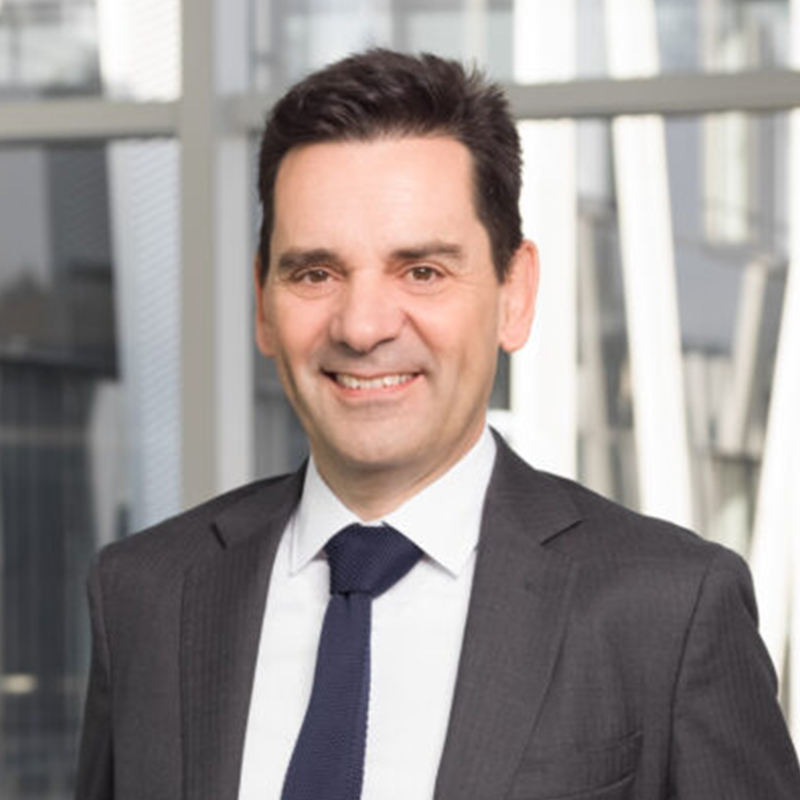
Luis Blanco
Nordex
Benchmark projects in multiple subsectors
The greatest proof of the privileged situation of the renewable energy industry in Navarra is the fact that companies in the region continue to promote pioneering and benchmark projects at industrial level, both in consolidated subsectors such as wind and solar, but also in emerging technologies such as green hydrogen or microgrids.
In terms of the most consolidated technologies, in the last years Ingeteam has designed the largest photovoltaic in the world, installed in the United Arab Emirates. In addition, Iberdrola Renovables Energía has recently acquired an innovative six-megawatt wind turbine for the region, in collaboration with Siemens Gamesa.
Another area in which Navarra is taking a leading role is repowering, a hot topic in the wind power industry. The term refers to the process of extending the life cycle of wind turbines by reconditioning their components and facilitating the recovery of materials or the recycling of blades. Numerous companies in Navarra are already working in this field to extend the useful life of wind farms in Navarra and replicate the process in other parts of the world.
Grupo Enhol is one of the most prominent firms in this field. In the opinion of its CEO, Diego Oliver, in Navarra “we have the opportunity to be pioneers in this area”. Hence, a conglomerate of companies, of which his firms forms part, has joined forces to lead a program they have called ‘R3-Circular Economy’. With it, they plan to promote “the reconditioning of components, the recovery of materials, as well as the recycling of composites (plastics) used in the manufacture of wind turbines.”
"In Navarra we have the opportunity to be pioneers in the area of repowering by extending the life cycle of wind turbines."
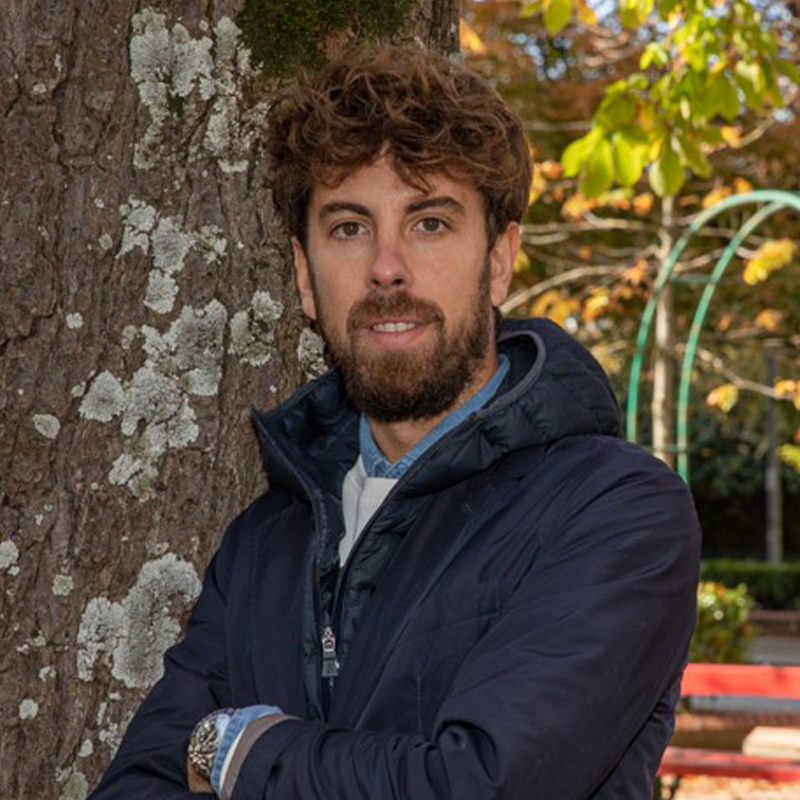
Diego Oliver
Grupo Enhol
The opportunities of green hydrogen
But, probably, the fastest growing area in Navarra’s renewables industry is green hydrogen. Numerous efforts are converging in the region to make this industry “so promising, especially focused on industrial processes”, as defined by Grupo Enhol. Acciona Energía, for example, is working to implement in the region a large green hydrogen production center like the one the company already has in Mallorca. Meanwhile, CENER is working on a high-temperature hydrogen production system that promises greater effectiveness.
Similarly, Nordex is currently developing the manufacture of electrolyzers in the region, an area in which it believes Navarre can repeat the success achieved with wind energy. “There are many synergies in the capabilities needed to develop a wind turbine and those that we believe are needed to produce an electrolyzer in terms of materials and know-how. Our intention is to develop a technology that the world will buy and Navarre will export,” explains José Luis Blanco, CEO of Nordex.
The Navarre government is aware of the opportunities that this technology can bring to the region, as shown by the recent agreement to co-promote the first cross-border green hydrogen valley in Europe, together with Catalonia, the Basque Country and Aragon.
"Our customers are increasingly asking us to decarbonize. And I think this is going to be a competitive factor in the future. The one that is decarbonized will sell more, but if not...".

Jesús Calavia
Viscofan
More sustainable industrial fabric
But efforts to promote renewables are not exclusive to companies in the energy industry. Numerous industrial firms are developing action plans to decarbonize their activity into their models in response to the demands of their stakeholders.
One example is the meat products company Viscofan, whose production plant last year incorporated green hydrogen as a substitute for natural gas. “Our customers are increasingly asking us to decarbonize. And I think it’s going to be a competitive factor in the future. The one that is decarbonized will sell more, but if not…,” says Jesús Calavia, CEO of the company.
Another interesting example of successful decarbonization is the industrial microgrid installed at Schneider Electric‘s Navarre plant, the first to operate in Spain. Thanks to this project, 50% of the raw material consumed by the factory is already recycled. “It is a project that combines the production of renewable energy ‘in situ’, battery storage and the installation of charging points for electric vehicles in order to achieve maximum autonomy and optimize consumption on the grid,” says Raquel Gascó, plant manager of Schneider Electric Navarra.
Gascó herself sheds light on another important aspect to boost the renewables industry in the region: awareness or, as she says, “creating a story to involve citizens in the change”. To contribute to this, the Navarre Executive is promoting various outreach activities, such as collaboration in the organization of the Self-consumption Congress of Navarra, held for the third time this year, the European Congress of Energy Communities, which will hold its second edition this fall, or the round of information sessions in the framework of collaboration with the Federation of Municipalities and Councils of Navarra.
